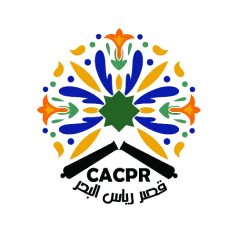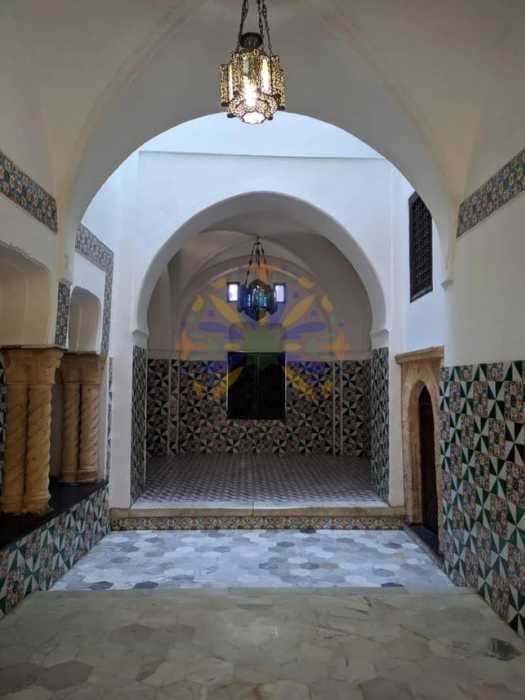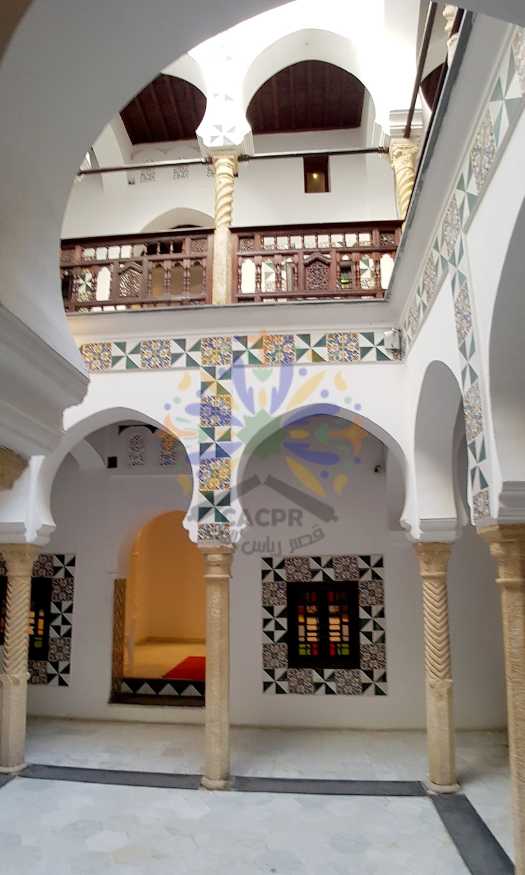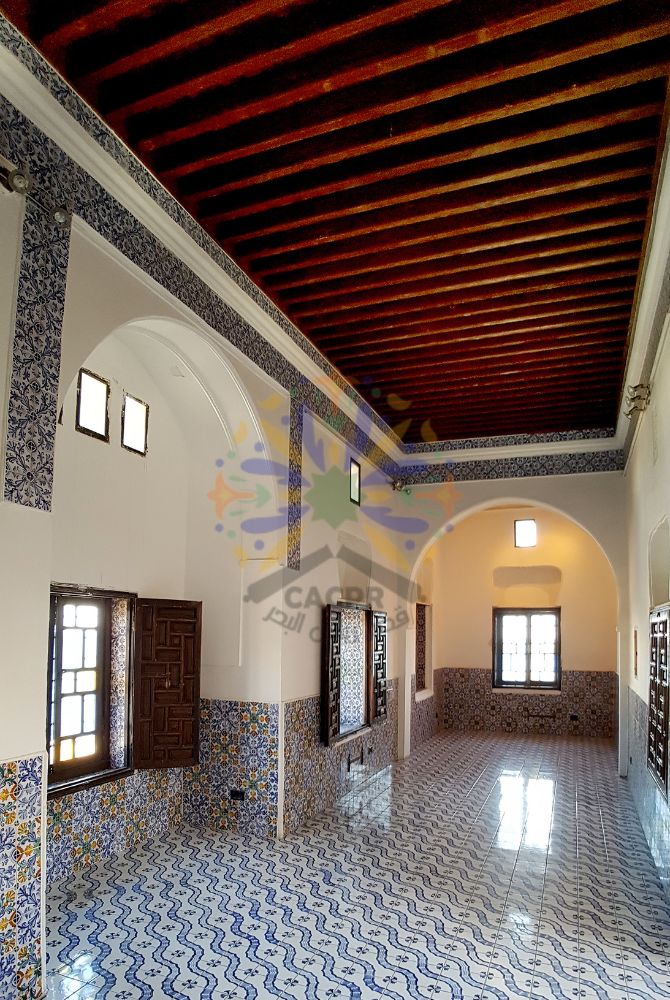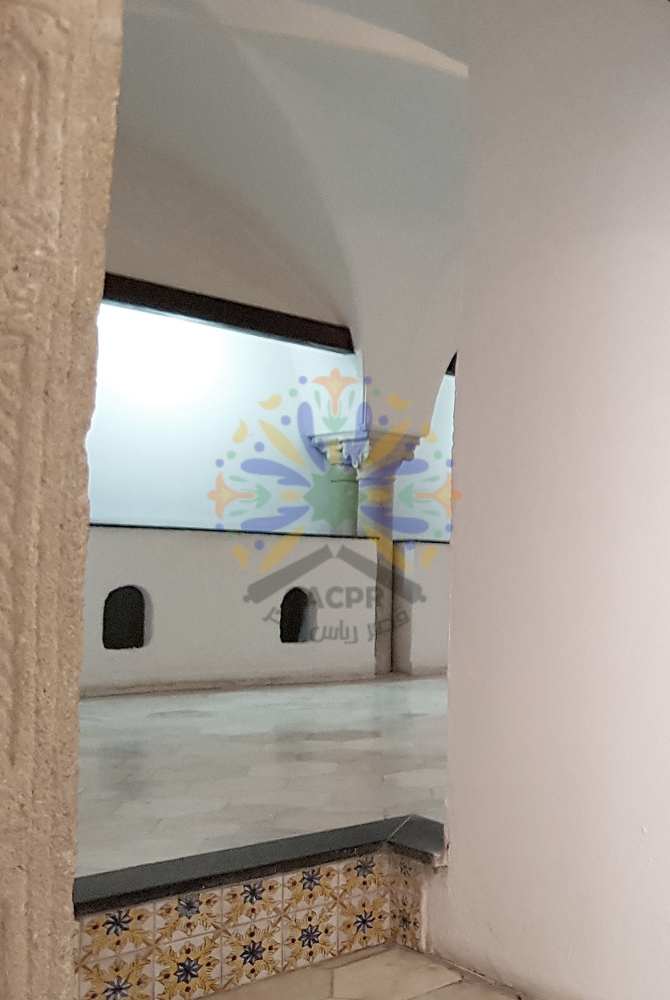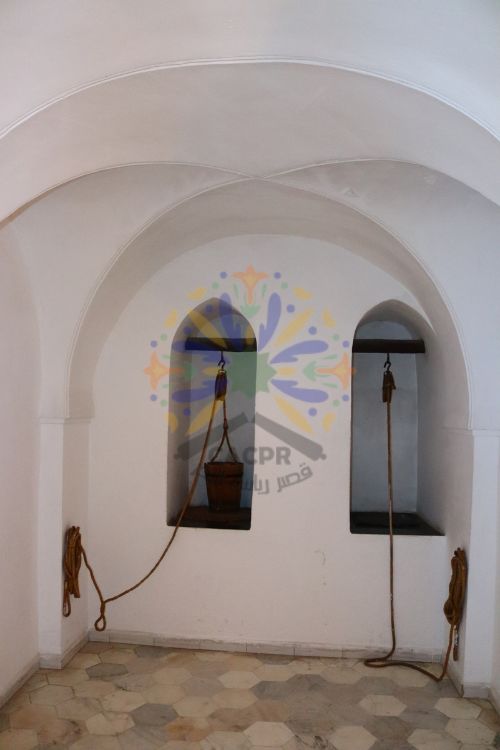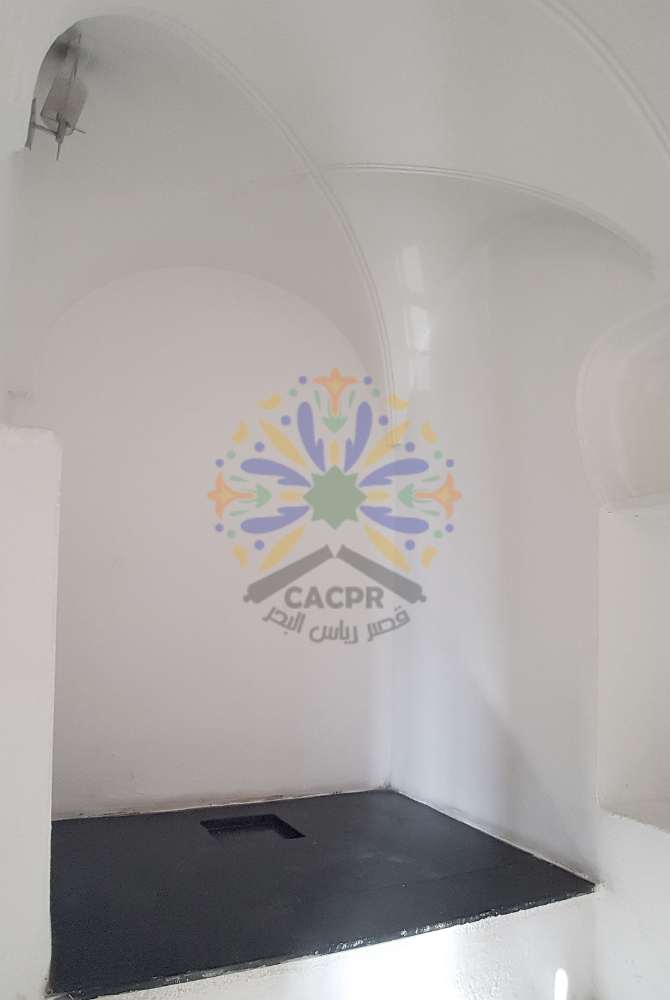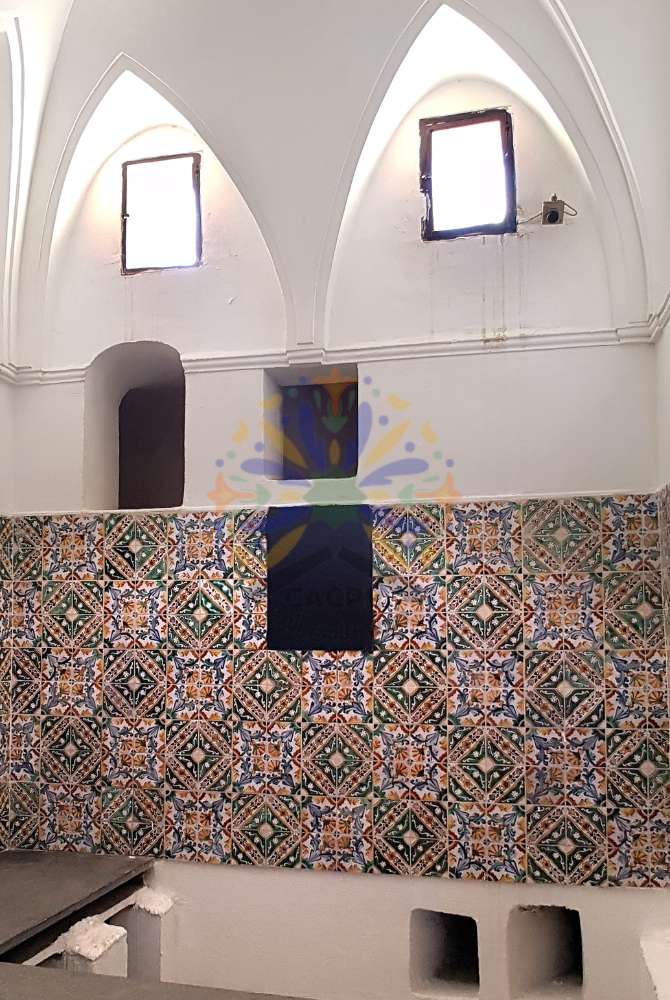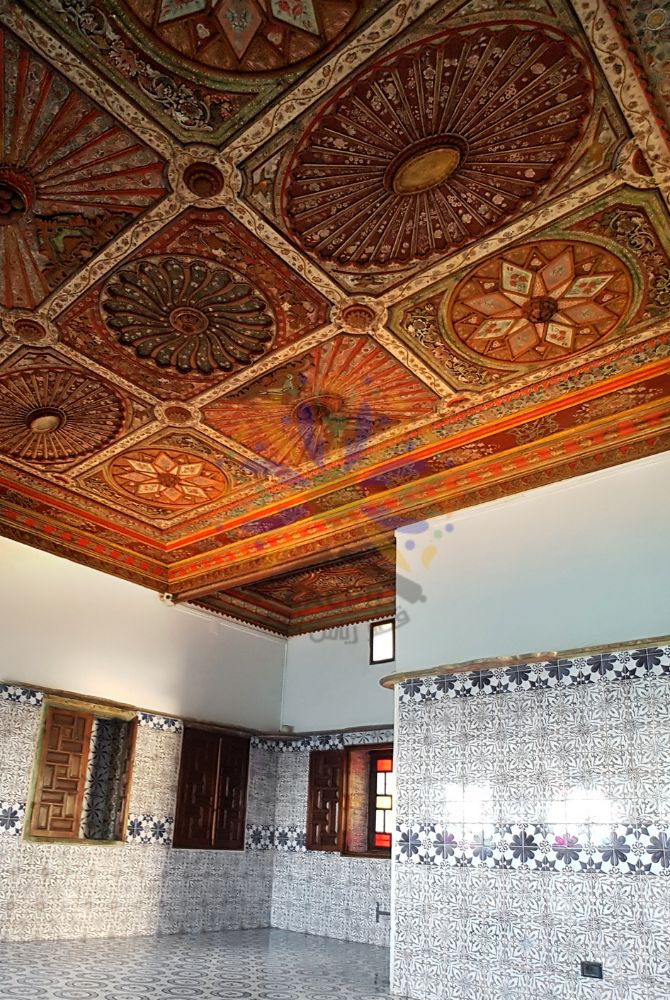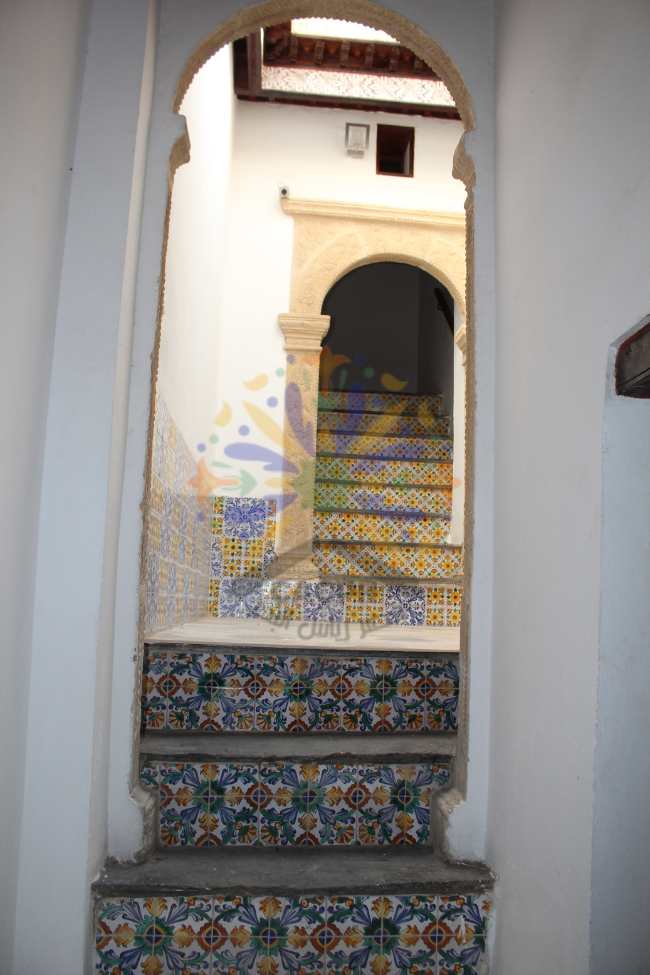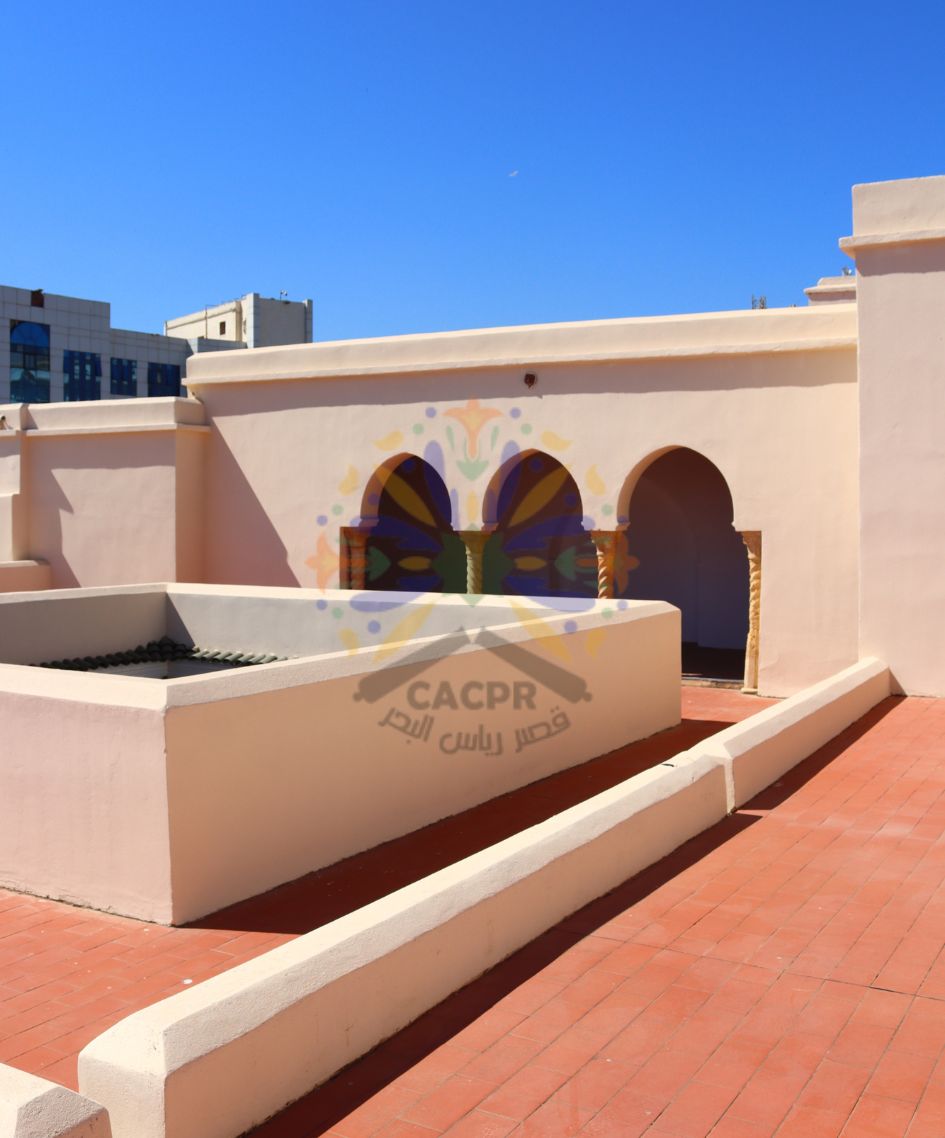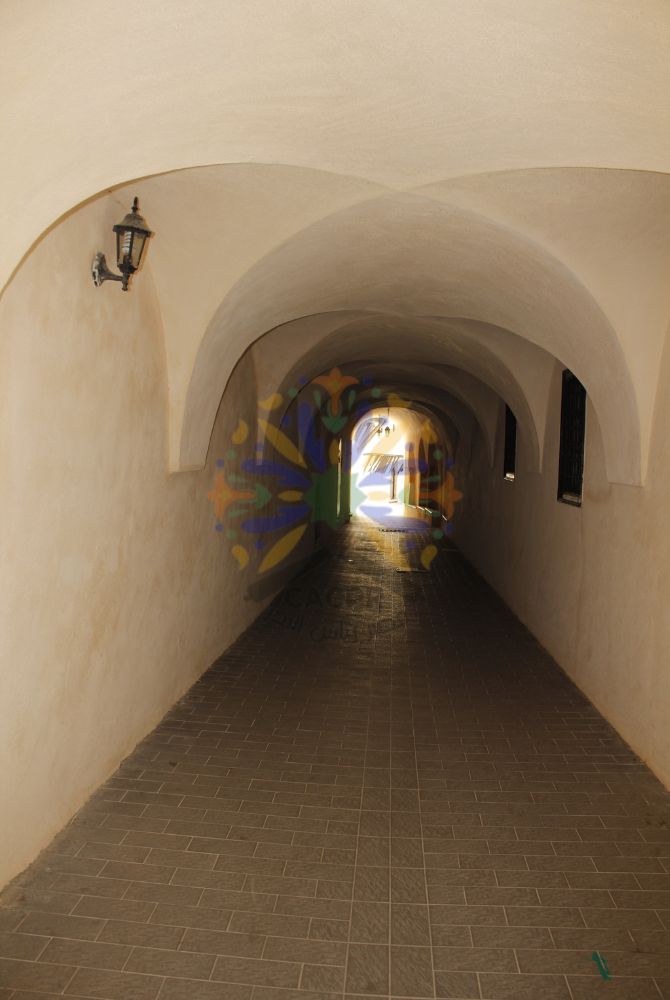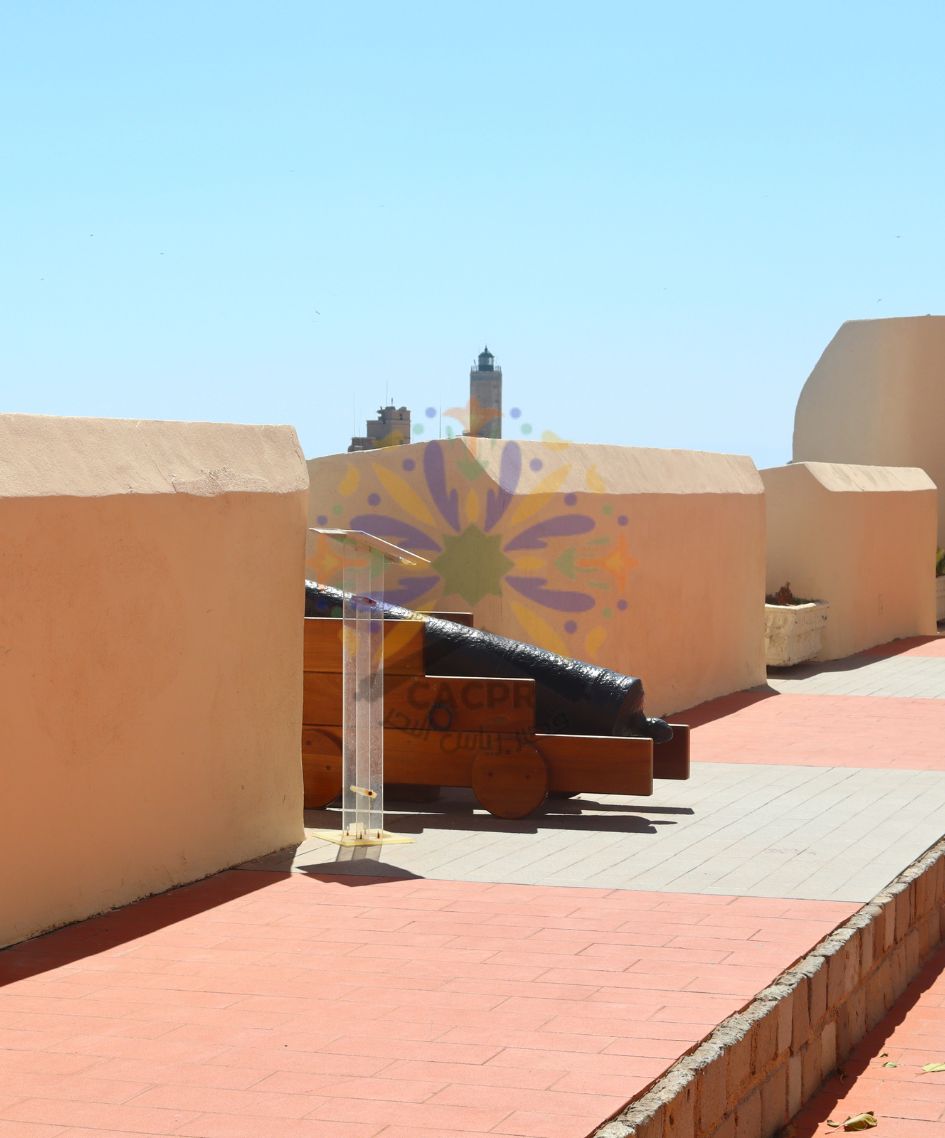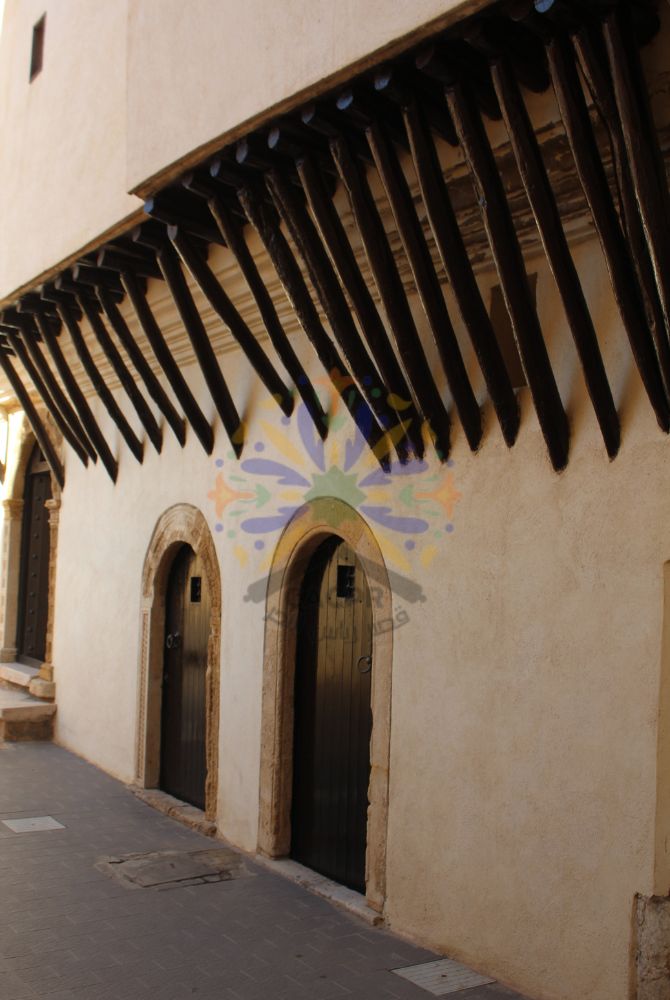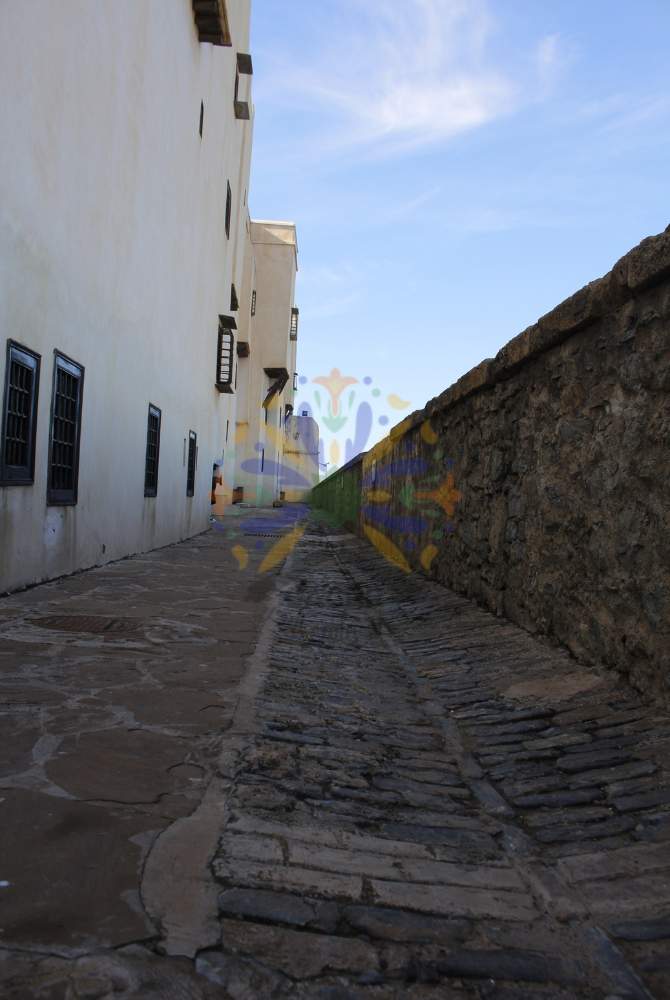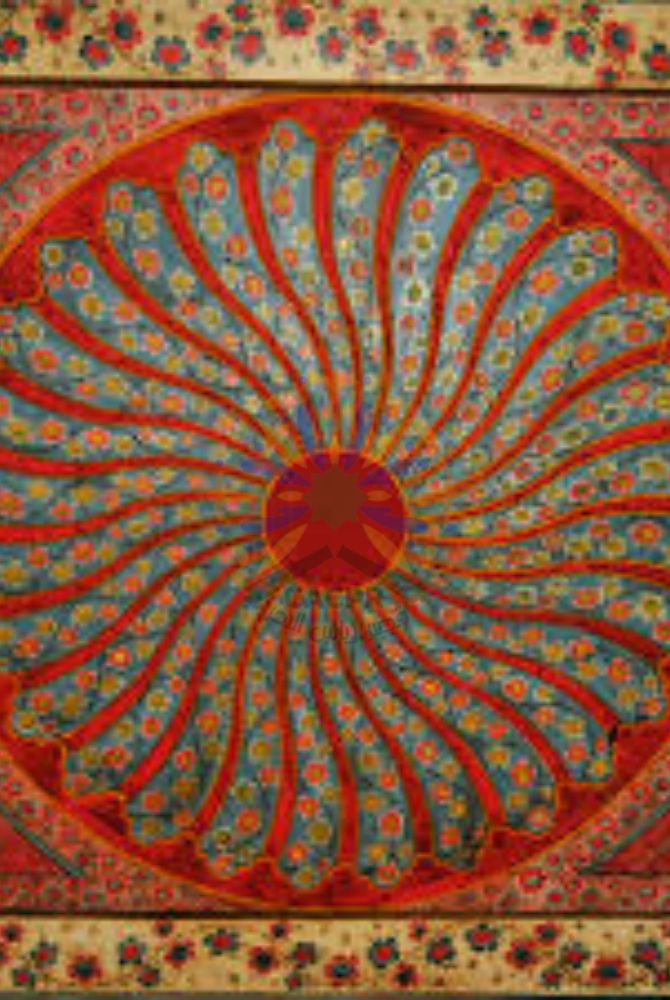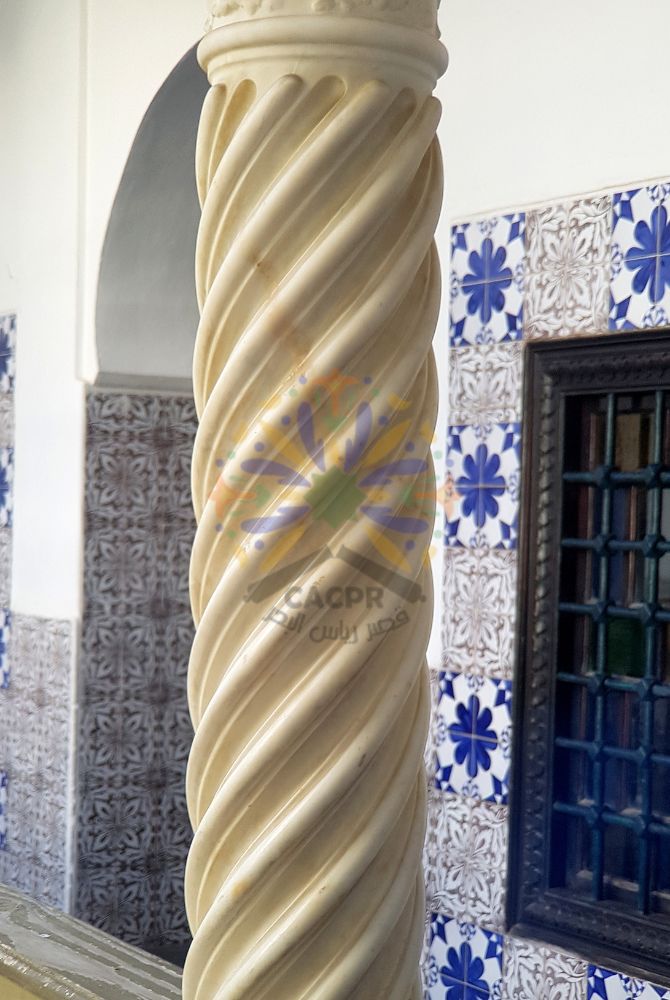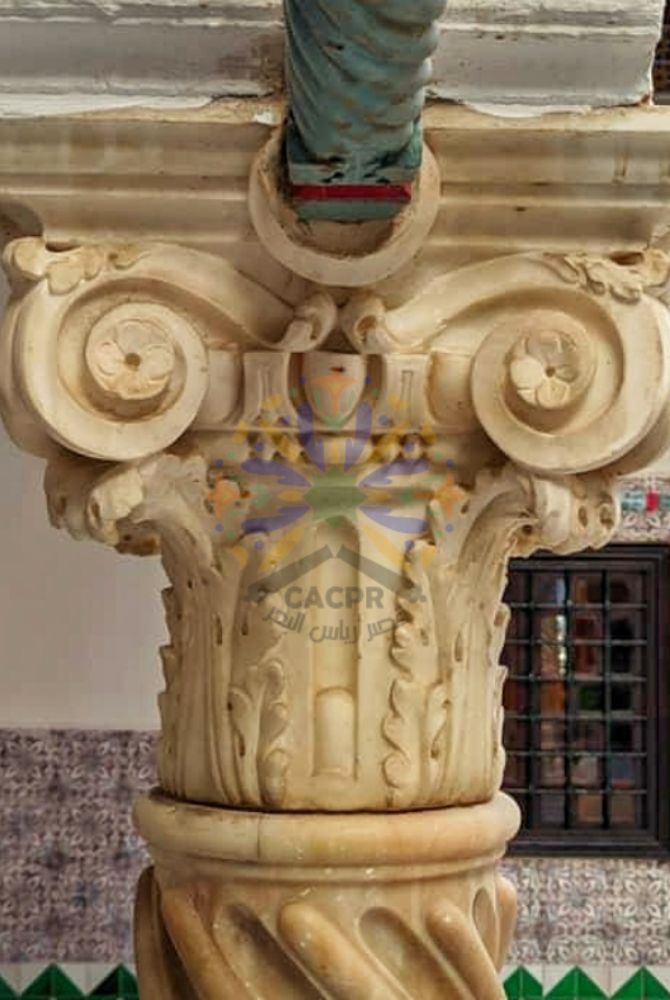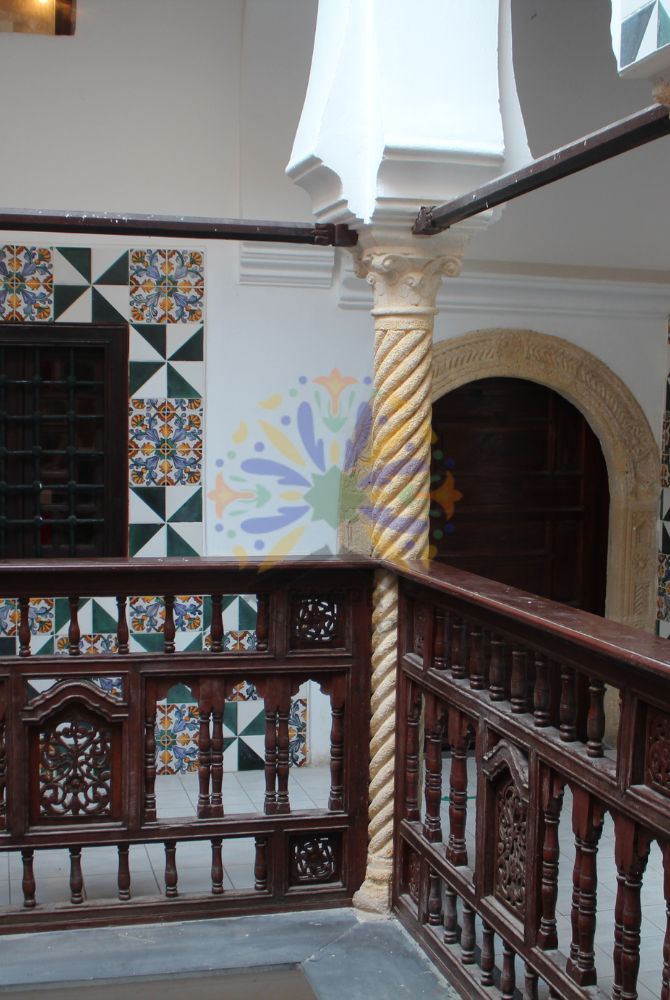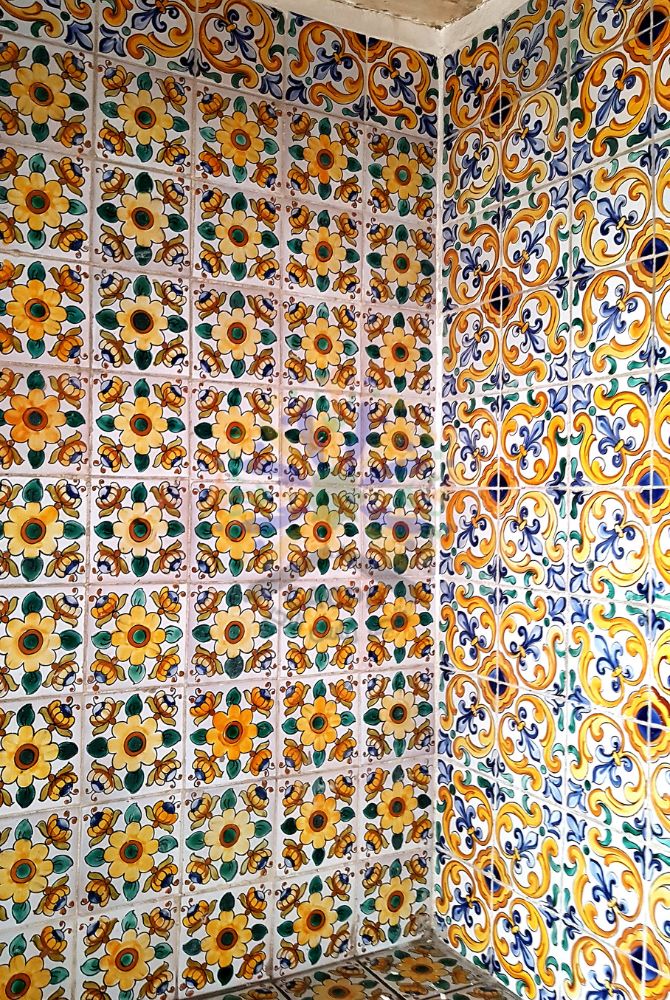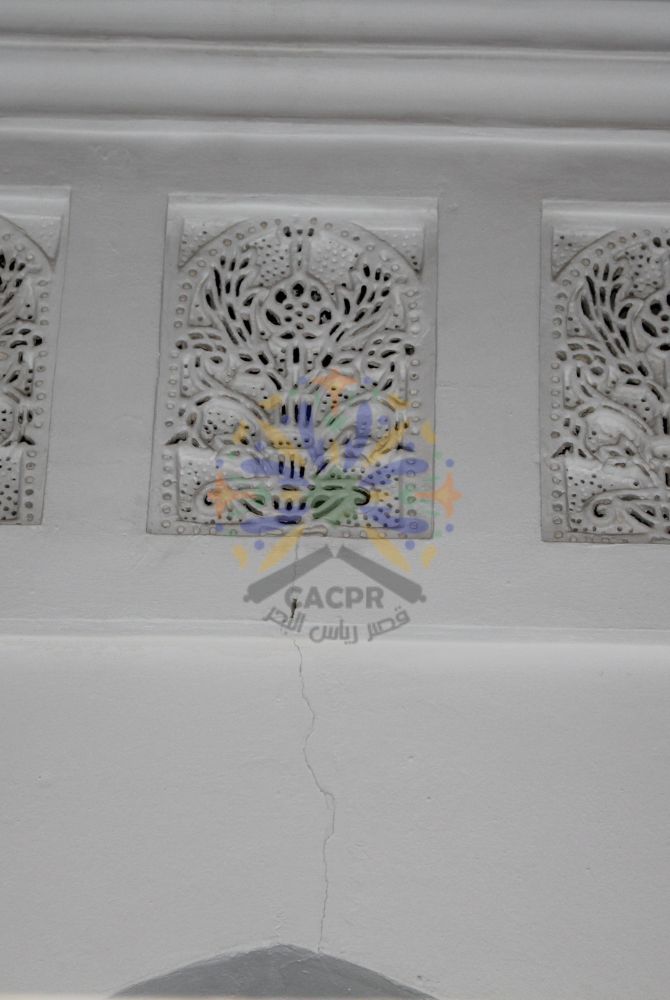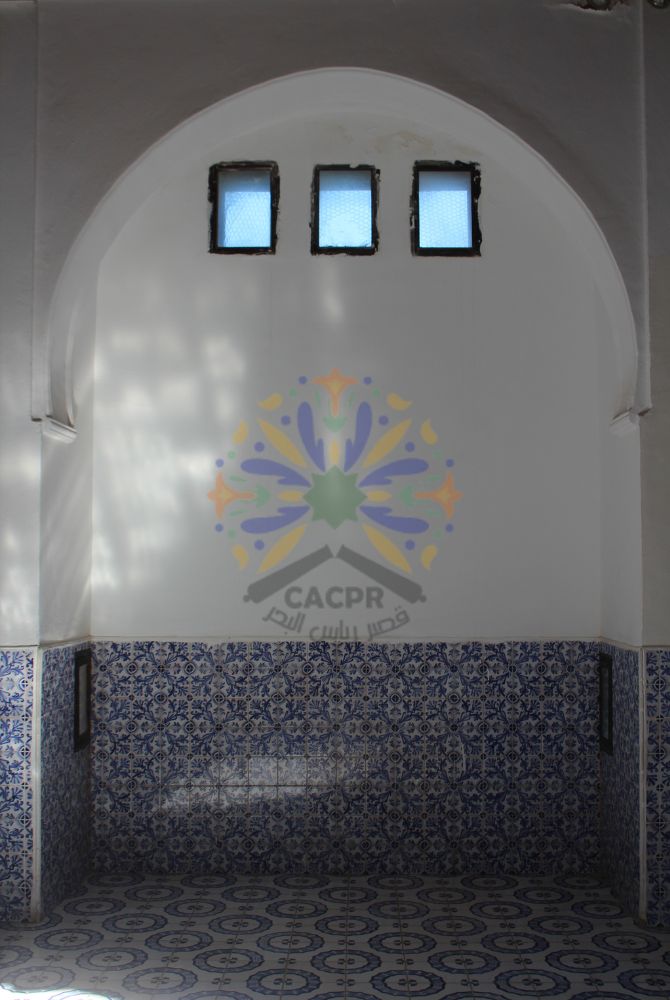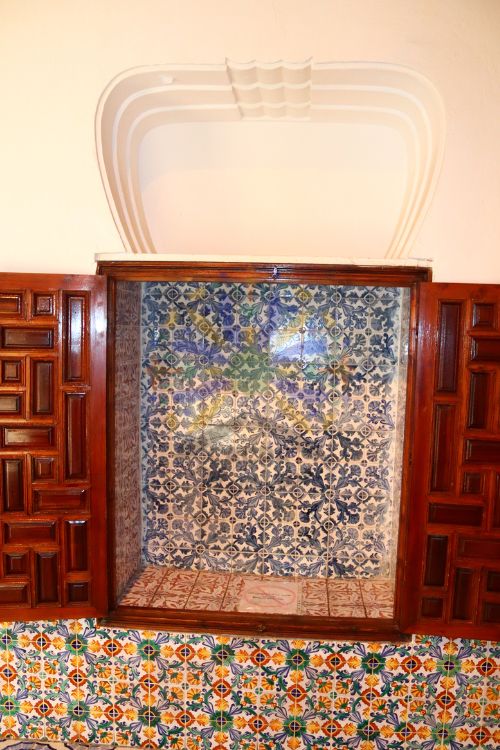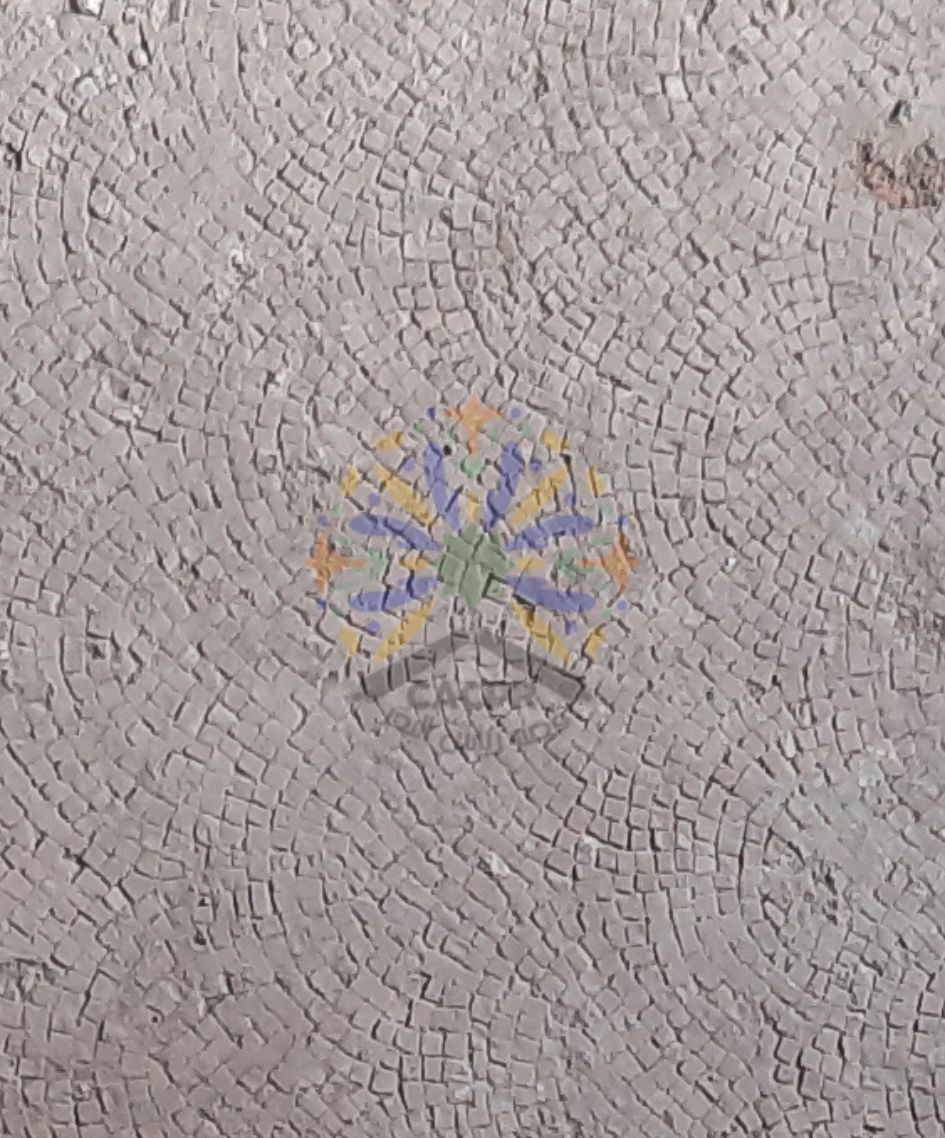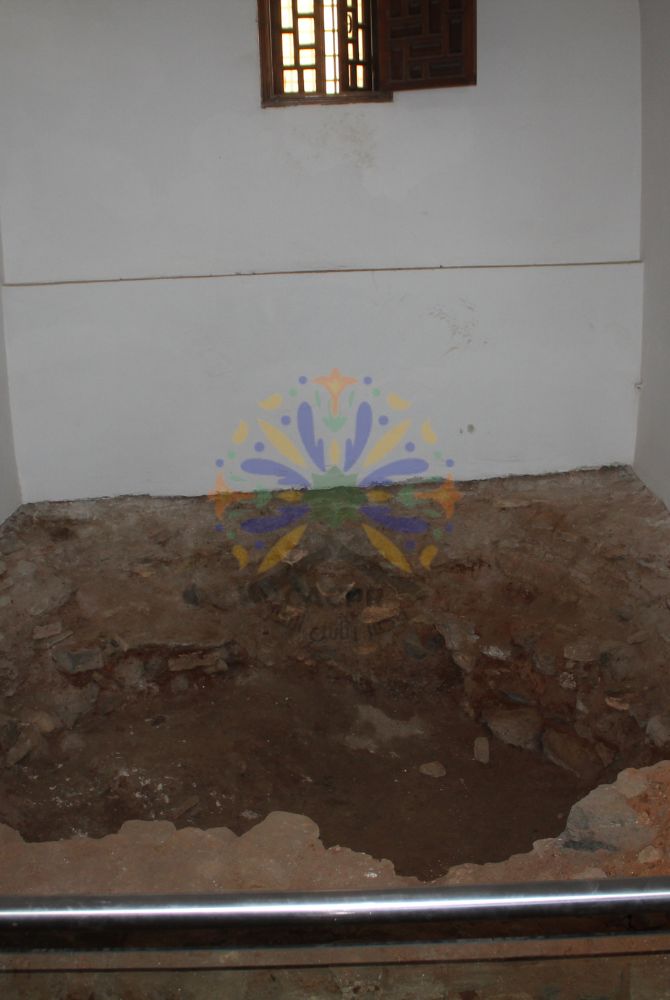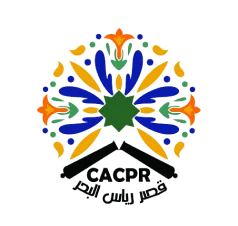The palaces’ internal spaces
Skiffa (palace18)
Wast eddar
(patio, courtyard palace 18)
El Byouttes and groufs
(rooms palace 18)
El khiama
(the kitchen palace 18)
Beyt Essaboune
(the laundry room)
Beyt el maa
(the rest room)
El Hammam (the bath palace 18)
The eating room (palace 18)
Douira (little house palace 18)
The flat roof
(terrace palace 18)
Sabbat (covered passage)
The battery
Fishermen houses
DJAMAA QAA Essour
The path round
(the battlements)
A reception hall where guests are received, it is the boundary between the house privacy and the outside. It contains three accesses: The first leads to the stable and the second to a little storage room, and the third gives access to the courtyard (patio). The vestibule is equipped with seats (benches) made of slate and decorative tiles which are topped by bascket handle, like arches supported by limestone columns, the floor is cobblestoned with hexagonal marble pieces. It is characterized by a vaulted and domed ceiling.
The courtyard is a wide square area considered as a thermal regulator of the building. It is surrounded by four galleries, with semi-circular broken arches held on 12 marble columns, crowned by Corinthian capitals. The floor is paved by hexagonal white marble plates; its walls are embellished with colorful tiles featuring floral and geometric motifs. This open-air space is traditionally used for domestic and festive activities.
Rooms are longitudinally shaped, containing a bunk bed with a storage space beneath and wall niches crowned by bascket handle like arches; an alcove (an architectural support) and small windows for ventilation, a wooden ceiling, claustras with Islamic arabesque decoration called (chamssiattes and qamariattes) and two big windows, protected with wrought iron, over-looking the courtyard (patio).
The kitchen is composed of two dependencies; the first is equipped with traditional stoves made of slate, down which there is a heating system called « FERNAQ », topped by a kitchen hood to drain out the cooking steam; whereas the second is used for storing food stuffs. Moreover, it is through El Fernaq, that the boiling water is distributed to heat up the bath through a gallery connected directly to the bath.
A water space which is equipped with a well for drinking water and «El Djeb » (a tank) for collecting rain water from the terrace by a water pipe, used for household chores and laundry.
The water close has a Turkish bowl and a soil made of slate equipped with a sewage system (drainage), in addition to that a small window for ventilation and air duct.
It is a Moorish bath composed of three successive rooms:
The hottest room which is equipped with two tanks for hot and cold water, so this space is used for bathing and relaxation. The second room it is used for getting rest and to avoid thermic choc; the third one consists of beds. bath’s floor is made of slate, but the dug space on the floor was left during restoration, as evidence for the heating system « hypocaust » and the evacuation of the water used as well. Furthermore, the bath wall is decorated with colorful tiles « zalidj » and featured with tiny windows for lightening and for air ducting the bath.
It has a polychromatic ceiling «multi colored », decorated with geometric, floral and animal patterns, and many significant fruit and vegetables such as: peaches, pears, lemons quinces, pomegranates and artichokes engraved on it. It has wall niches for utensils and shelves for decoration and for putting oil lamps too.
A private isolated dependency (a small house) dedicated either to the staff service or to the guests, involved in the Dar (the big house). It is featured by all the amenities such as: a little court yard, a room, a kitchen, a water close and an individual access to the terrace.
The flat roof has an amazing panoramic view, where social and festive activities take place. It is characterized by a covered space called « El Manzah », used for sitting and enjoying the fresh breeze, shade and the sun too. Its floor is paved with break-colored tiles and « terracotta water pipe» that slopes down the rain water towards the tank«El Djeb »
This covered corridor is called “Sabbat el Hout” that means the covered passage of the fish, which is unique only to this site (palace of Rias), it is because of a sculptured fish that was found at the entrance of it. This passage is equipped with benches made of slate used for resting and a wall mounted fountain. It is a space for relaxation.
It is a part of the defense system. Its role is to protect the city from the seaside, built with stones brought from the remains of the roman ruins, due to their strong resistance. It contains four artillery holes. It allowed the guards to exercise daily guard mission and oversight task as well.
They are six, simple and modest harmoniously arranged houses. They were numbered during the colonial period.
It is located between the fishermen’s houses and palace 17, just near by a fountain for ablutions. It is composed of three rooms: the one for praying, in which its arches are supported by lime stoned columns. Its wooden ceiling is characterized by thuja logs and the two other rooms are used for rehearsing the « Quran ». As it is equipped with a « Mihrab » a (wall niche) indicating Al Qibla and tiny windows for air ducting and lighting.
This path over-looking the admiralty and «khair Eddine Barbarossa’s jetty» was extended during the colonial period, to strengthen the fort.
Architectonic and decorative elements
Ceilings (palace 23)
Arches
Columns (palace 23)
Chapitals
Balustrades
Tiles
The claustras (chamsiyattes, qamariyattes)
Alcove
Wallniches
The ceilings are made of thuja and cedar, or pine wood that resist humidity, earthquakes and mite too, some of them are found in the form of non-trimmed wooden beams; others decorated with geometrical and floral shapes and the rest in the form of cross sided domes found in the skiffa, the laundry room, the bath and the kitchen.
Arches are made of limestone or marble; they are semi-circular or bascket handle shaped arches.
Columns either are made of marble, or limestone tuff, they support the weight of the construction, they are: twisted, semi twisted, octagonal, semi octagonal, braided, semi braided and compound or doubled (Twinned).
Capitals are made of marble or limestone; most of them are with the Corinthian style, bearing a crescent symbolizing the ottoman presence and hope as well.
On the upper floor of the palaces, there are railings that add to the beauty and the elegance of the palace, decorated with a great artistic ingenuity and formed of open work wood. They connect the columns of the upper floor and protect people from falling. They are interspersed with small columns connecting to the upper sparkling arcades. The upper floor is called HARAMLAK which is dedicated to women.
Tiles were imported from different origins such as: Holland (Delft), Italy, Spain and Tunisia and the local ones too. They are ornamented with the Clove and the Acanthus flower, Anemone flowers, Squeaks, wild scraps and pine trees too.
They are decorative elements above the doors, made of stucco with openings of Arabesque decoration (floral art), allowing the passage of light and air.
An alcove is a central architectural element in each room , supporting the building and prominent from the external facade of the buildings, used for sitting inside, providing a dominating view to the patio and to the outside as well.
Rooms are equipped with symmetrical wall niches which are shaped as bascket handle like arches.
Archeological evidence
The Roman mosaic
The Roman bath
The last restoration works performed in 1988 revealed the existence of roman remains, such as: a 9m2 mosaic inside the buildings A and B, exactly at the current heritage library, depicting a marine scene of fish scales.
A roman bath discovered in the underground (the basement) of palace 17, dating back between the 2nd and the 3rd third centuries AD. The polished stone used during the colonial period is an evidence which proves the Roman presence, precisely when Algiers was called « ICOSIUM », that testifies the roman extension of Algiers as a city till the sea ,then ICOCI by Phoenicians when it was a Phoenician harbor; then « El Djazair Bano Mezghana», «EL MAHROUSSA» (the well-guarded) and finally El Djazair.
